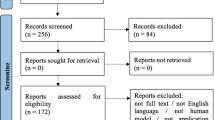Abstract
Several questions addressing human versus computerized lie detection have been answered as a result of technological advances in the computer field. User friendly software has enabled the polygraph examiner to make necessary test adjustments in “real time” clinical environments. Many of the issues surrounding test procedures and chart evaluation are resolved incorporating this proven technology. Particularly significant is the conversion of physiological responses of a binary system to that of a digital recording, eliminating the subjective errors associated with manual chart measurements usually found with the inexperienced examiner. Online acquisition of data utilizing the ability to make corrections in recording artifacts, along with the capability to perform the final exam analysis in record time are two major examples of computer advantages in the truth verification field.
Similar content being viewed by others
References
Brown, D. & Nikels, K. (1992) “The control of psycho-physiological response to emotion by biofeed-back techniques: Its effect on truth verification.”Journal of Police and Criminal Psychology, Vol 7, No 1.
Forman, R.F., & McCauley, C. (1986) “Validity of the positive control polygraph test using the field practice model.”Journal of Applied Psychology, Vol 71, 691–698.
Horvath, F. (1990, March) “Detecting deception: Comments on the controversy about the accuracy of polygraph testing in criminal investigations and recent empirical findings.” Paper presented at the Academy of Criminal Justice Sciences, Denver, CO.
Kircher, J.C. & Raskin, D.C. (1983) “Clinical versus statistical lie detection revisited: Through a lens sharply.”Psychophysiology, Vol 20, 452. (Abstract)
Kircher, J.C. & Raskin, D.C. (1988) “Human versus computerized evaluations of polygraph data in a laboratory setting.” Manuscript accepted for publication in theJournal of Applied Psychology, 73.
Lafayette Instrument Company. (1994) Manual on the use of the LX-2000 Polygraph Workstation.
Raskin, D.C. (1976) “Reliability of chart interpretation and sources of errors in polygraph examinations.” Report No. 76-3, Contract 75-NI-99-001, U.S. Department of Justice. Salt Lake City, Utah: University of Utah, Department of Psychology.
Raskin, D.C. (1982) “The scientific basis of polygraph techniques and their uses in the judicial process. In A. Trankell (Eds.),Reconstructing the past: The role of psychologists in criminal trials. Stockholm: Norsted and Soners.
Reid, J.E. & Inbau, F.E. (1977)Truth and deception: The polygraph (“lie detector”) technique. Baltimore: Williams & Wilkins.
Slovik, P. & Lichtenstein, S. (1971) “Comparison of Bayesian and regression approaches to the study of information processing in judgment.”Organizational Behavior and Human Performance, Vol 3, 305–309.
Stoelting Polygraph Company. (1994) “Probability and relative response magnitudes.” Manual on the use of the Computerized Polygraph System (CPS).
Szucko, J.J. & Kleinmuntz B. (1981) “Statistical versus clinical lie detection.”American Psychologist, Vol 36, 48–496.
Author information
Authors and Affiliations
Rights and permissions
About this article
Cite this article
Brown, D.C. Computerized lie detection: Advancing the state of the art. JPCP 10, 26–30 (1995). https://doi.org/10.1007/BF02812866
Issue Date:
DOI: https://doi.org/10.1007/BF02812866




